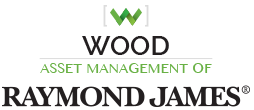
Strategies grounded in
objectivity and independence
Your goals, our solutions
Different needs demand different styles of investing. After discovering and carefully evaluating your objectives, investing time frame and risk tolerance, our team explores which of our portfolios may be a good fit to help reach your goals.
As an objective team of advisors, we offer tailored investment solutions for you. Some of our portfolios are outlined below and include those suited for investors looking for capital appreciation, income and growth, dividend income, active and passive growth, and active and passive balanced. For other client needs, we may outsource international, small-cap investment, emerging market equity selection or utilize satellite strategies.
This core equity portfolio seeks long-term growth. Comprised of all-cap, domestic equity, the portfolio invests primarily in U.S.-traded equities with market caps greater than $1 billion. Our quantitative evaluation of securities focuses on companies' fundamental improvement, with additional details including:
- Top-down approach to our tactical allocation.
- Bottom-up approach to security selection.
- Companies and market sectors based on fundamentals and economic trends.
- A flexible mandate, as the market constantly changes.
- Diversification across S&P 500 sectors, with no sector greater than 30% of the portfolio.
- Ability to be defensive – raising cash or investing in fixed income, if we believe market conditions warrant.
- Tax sensitivity, as the portfolio harvests short-term losses while targeting long-term gains.
This moderate, domestic growth portfolio includes a current income component. Typically invested 70% in equities and 30% in income-producing securities, this portfolio may invest in stocks, bonds, bond funds, real estate investment trusts (REITs), dividend stocks and exchange traded funds (ETFs). The portfolio can be defensive and raise cash or increase fixed income investments if we believe market conditions warrant. Three portfolio components are income, core and growth:
- Income investments include, bonds, bond funds, bond ETFs, REITS, preferred stocks and dividend-paying common stocks.
- Core investments generally include large, well-run, blue-chip companies that we believe offer dividend growth, some yield and capital appreciation.
- Growth investments are equities that we hope outperform the market.
This portfolio seeks current dividend income with some capital appreciation. Staying fully invested to capture qualified dividends, the portfolio invests in 20 to 25 high-paying dividend companies diversified across sectors.
- Invests in real estate investment trusts (REITs), exchange traded funds (ETFs) and traditional equities.
- Rebalancing of valuation and yield.
These portfolios are designed for long-term capital appreciation and invest in fully diversified asset classes. Utilizing passive exchange traded fund (ETF) index investing combined with high active share strategies, the portfolios stay fully invested in ETFs, mutual funds and bonds.
There is no assurance that any investment strategy will be successful or attain its goals. Investing involves risk including the possible loss of capital. Diversification does not guarantee a profit nor protect against loss. Dividends are not guaranteed and will fluctuate. Diversification does not guarantee a profit nor protect against loss. Rebalancing may result in a taxable event.
International investing involves additional risks such as currency fluctuations, differing financial accounting standards, and possible political and economic instability. These risks are greater in emerging markets. Small and mid-cap stocks generally involve greater risks than larger more established companies.
The yield and market value of fixed income securities will fluctuate with changes in market conditions, and may be affected by several risks including interest rate risk, default or credit risk, and liquidity risk. There is an inverse relationship between interest rate movements and fixed income prices. Generally, when interest rates rise, fixed income prices fall and when interest rates fall, fixed income prices generally rise. The value of real estate investment trusts (REITs) and their ability to distribute income may be adversely affected by several factors including, rising interest rates, changes in the national, state and local economic climate and real-estate conditions, increased competition from new properties, and other factors beyond the control of the issuers.
The S&P 500 is an unmanaged index of 500 widely held securities. Investments cannot be made directly in the index.
Investors should consider the investment objectives, risks, and charges and expenses of mutual funds and exchange traded funds carefully before investing. The prospectus contains this and other information about these investments. The prospectus is available from Wood Asset Management and should be read carefully before investing.



